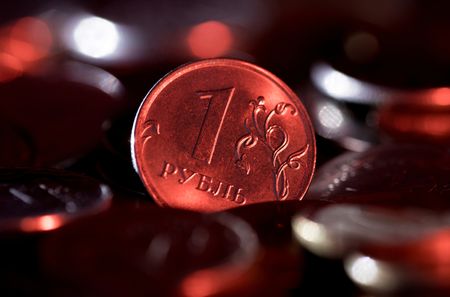(Reuters) – The Russian rouble weakened past 87 against the dollar to a 15-month low on Thursday, hampered by domestic political risk concerns after an aborted mutiny over the weekend, with market uncertainty fuelling demand for safe-haven assets.
By 0823 GMT, the rouble was 0.7% weaker against the dollar at 86.96 <RUBUTSTN=MCX> having hit 87.47, its weakest point since March 29, 2022.
It was down 0.7% to trade at 94.94 versus the euro and shed 0.8% against the yuan to 11.98.
Capital controls have helped insulate the rouble against geopolitics in the 16 months since Russia invaded Ukraine, but Yevgeny Prigozhin’s march on Moscow reverberated through markets and left questions about President Vladimir Putin’s grip on power.
The rouble lost a key support factor on Wednesday as a month-end tax period that typically sees exporters convert foreign currency revenues to meet local liabilities passed.
“As we expected, the rouble fell at the end of the tax period, quite sharply, by around 1.5%,” said Alor Broker in a note. “We expect the national currency’s weakening to continue, down to around 89-90 against the dollar.”
Brent crude oil, a global benchmark for Russia’s main export, was down 0.4% at $73.74 a barrel.
Russian stock indexes were higher.
The dollar-denominated RTS index was up 0.1% to 1,015.8 points. The rouble-based MOEX Russian index was 0.8% higher at 2,804.0 points.
Shares in retailer Magnit were down 0.6% after leaping to a more than seven-month high in early trade.
Magnit late on Wednesday said it would almost triple the number of blocked shares it buys back from foreign shareholders in response to strong demand from Western investors keen to exit Russian holdings.
For Russian equities guide see
For Russian treasury bonds see
(Reporting by Alexander Marrow; editing by Christina Fincher and Jason Neely)





